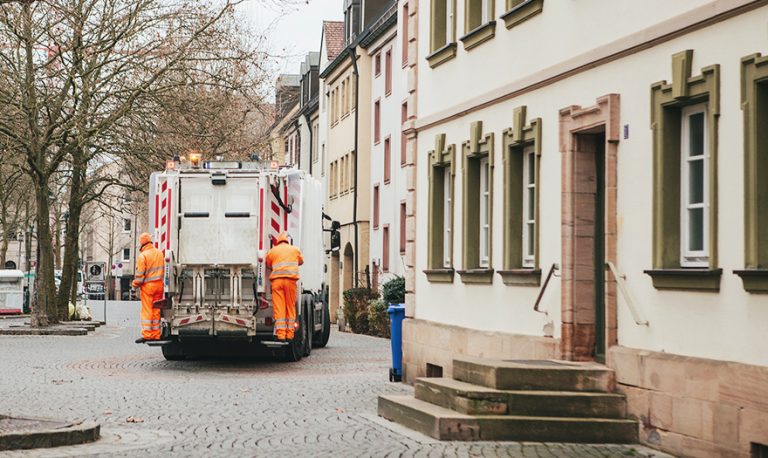
Turning is often not possible in narrow streets.
Narrow streets, parked cars, one-way streets, dead ends ... And then turn around? You can't even do a quick U-turn with a garbage truck like you can with a car. Turning is usually associated with reversing. This is a “hot” topic in the waste disposal industry: On the one hand, it is about planning and optimizing tours as efficiently as possible. On the other hand, there have been serious and even fatal accidents, not only by directors but also by uninvolved third parties, when reversing - and the near accidents are not counted here.
Because of the great dangers, the question of “detour or reversing?” Has become a contentious point for the entire industry. Disposal companies, drivers, insurance companies - and last but not least the tour planners - have to deal with this and find solutions. Our example clearly shows how big the detour can often be if you want to avoid reversing.
Turn it around in 20 seconds or take a detour in 10 minutes?
In a rural residential area there is an only partially developed, narrow street. The ideal line (turning on the street) is not possible for a garbage truck due to lack of space.

A driver can cover the significantly shorter distance in around 20 seconds - but this is only possible by reversing.

The journey without turning or reversing is many times longer, so it takes more time. Ultimately, more vehicles and more staff have to be planned for the collection tour. The supposed detour to avoid reversing is the safer option.

Reversing cannot always be avoided
During the cooperation with the Frankfurter Entsorgungs- und Service GmbH FES, gts encountered numerous problems. For example, when driving bulky waste, when several vehicles drive in a row to collect different bulky items. Here reality shows that reversing cannot always be avoided. There are even disposal companies who no longer drive to narrow streets for insurance reasons because the insurance companies refuse to insure the garbage trucks there.
The dead ends cause the biggest problems. Here a vehicle has to drive out in reverse if these are too narrow or do not have a turning hammer. The alternative is that the vehicle drives backwards into the street and forwards out again. You can't expect the citizens to bring their garbage cans to the beginning of the street. Even if this is the case even in some places.
Route planning software shows the best route option
Many companies have shown that route planning software finds better route options than the planner or driver, even if they know the best abbreviations on site. The most efficient tour, taking into account all criteria, can be better planned using software than manually, especially since there are current changes and new challenges every day. The software does this faster - you can save up to an hour a day. What is ideal, however, is the interaction between on-site experience and technology.
Industry rule is unrealistic

The company tells the software how much time it is ready to plan for a turning maneuver.




